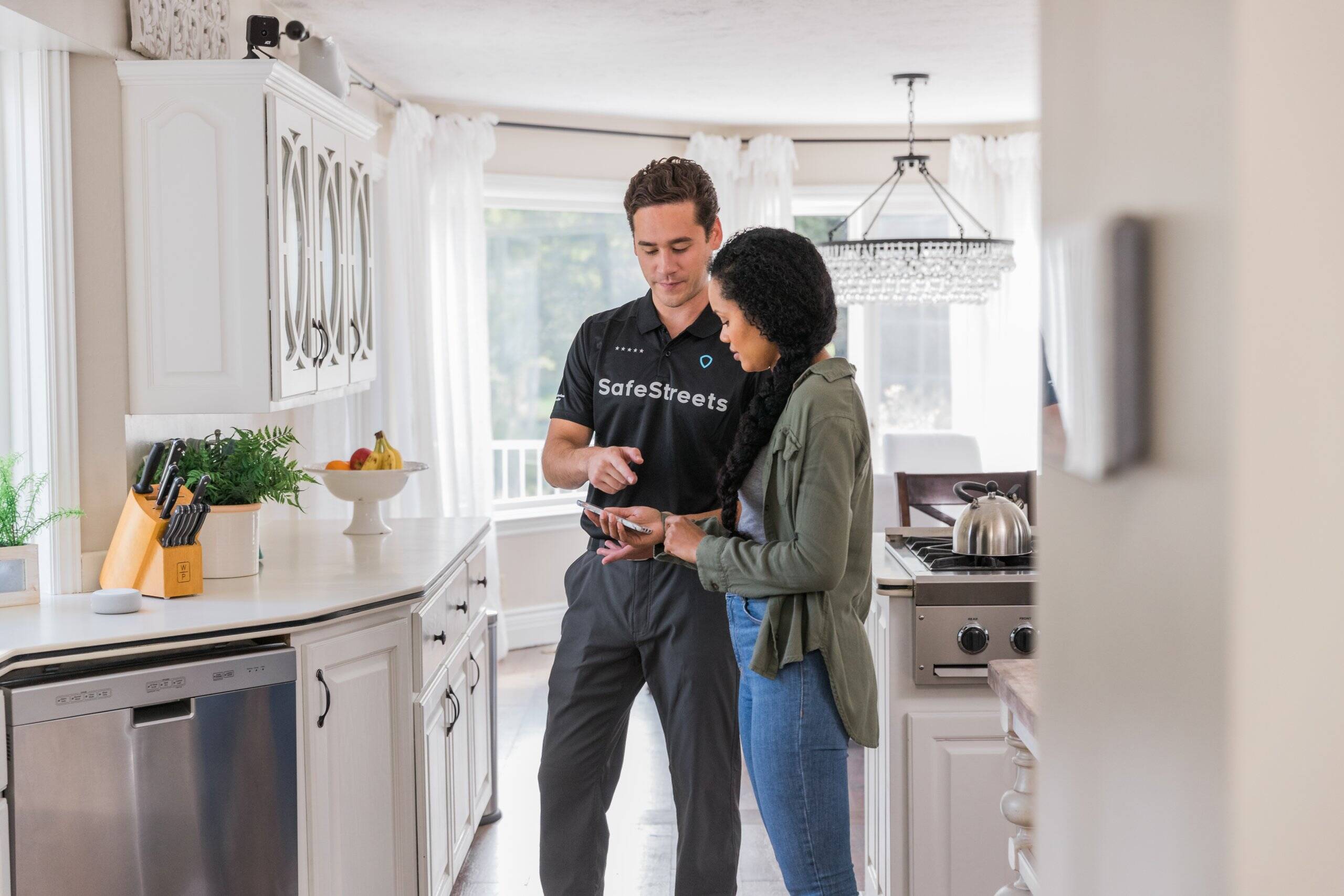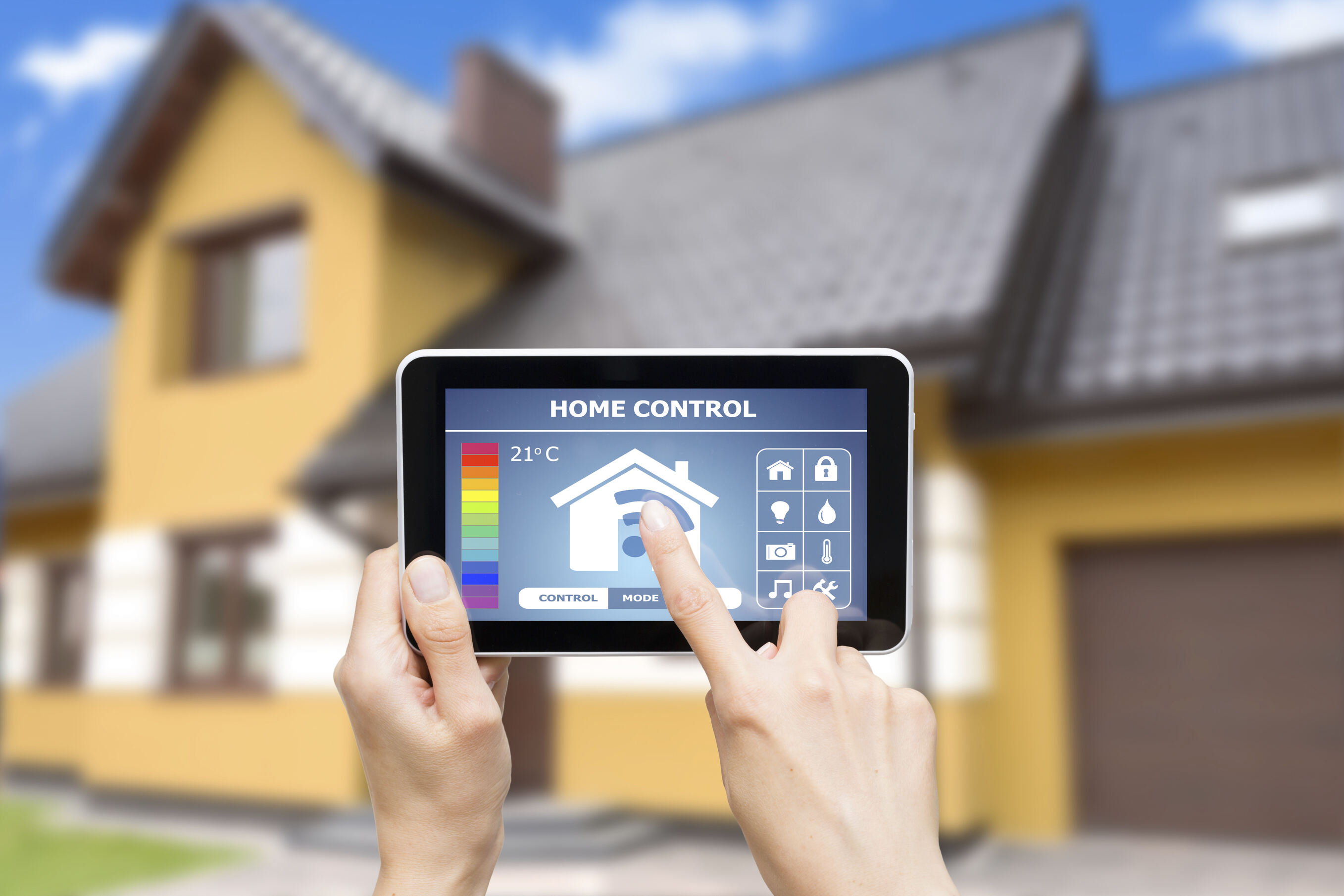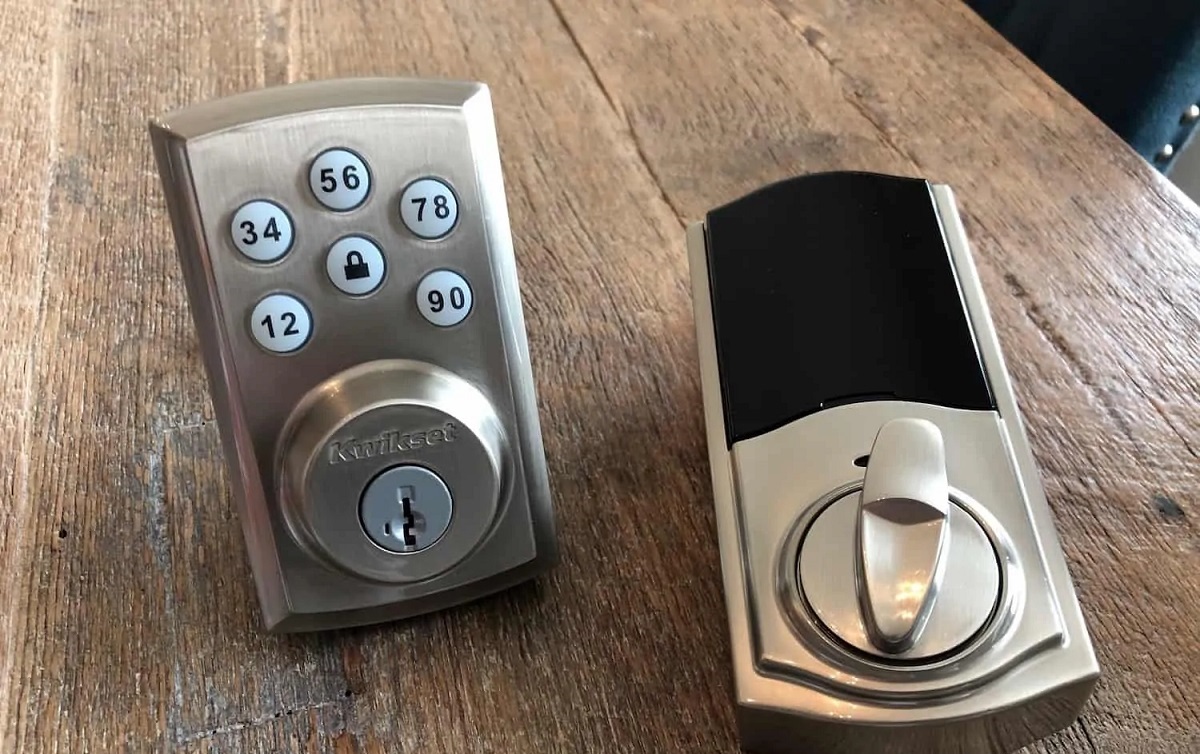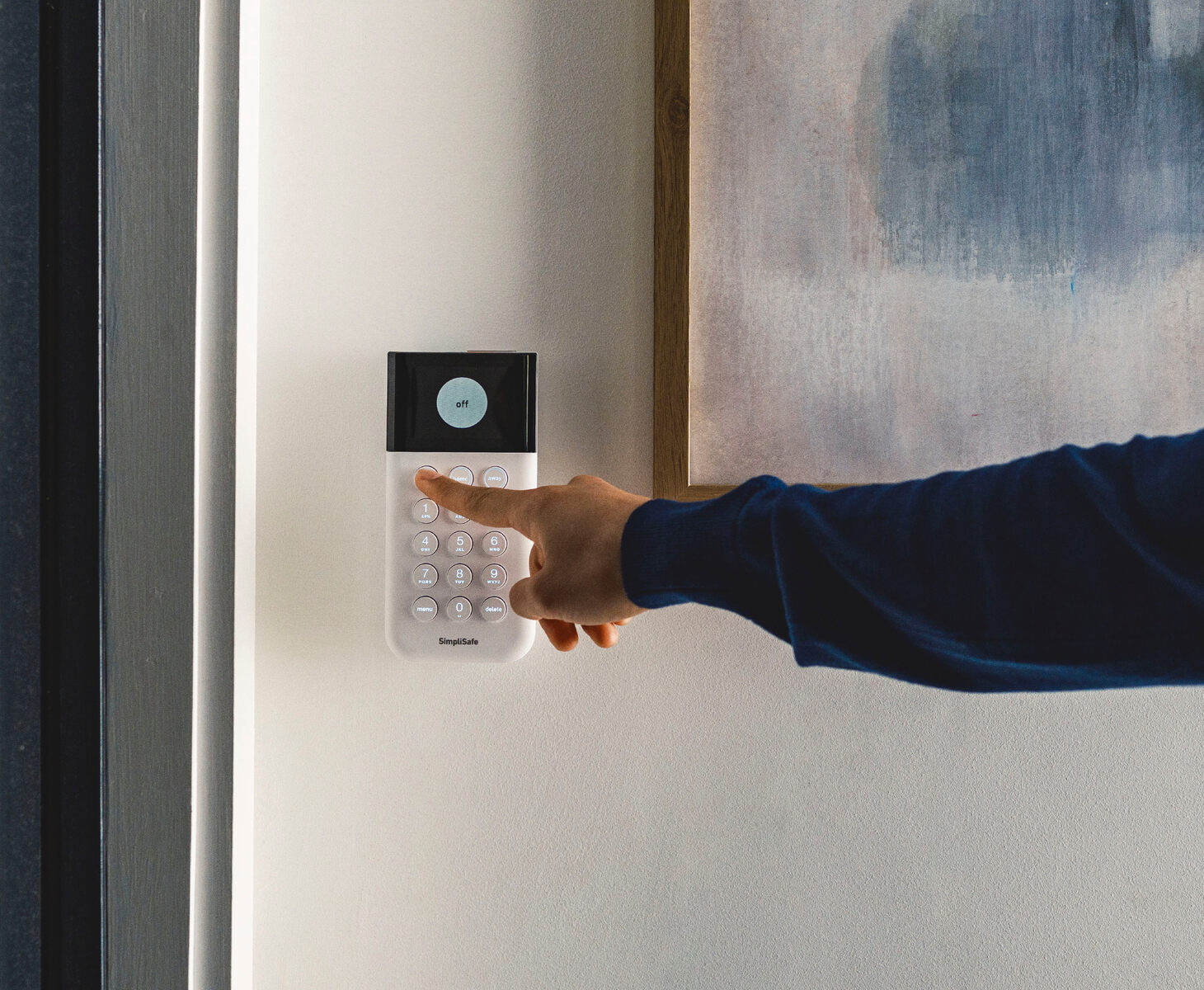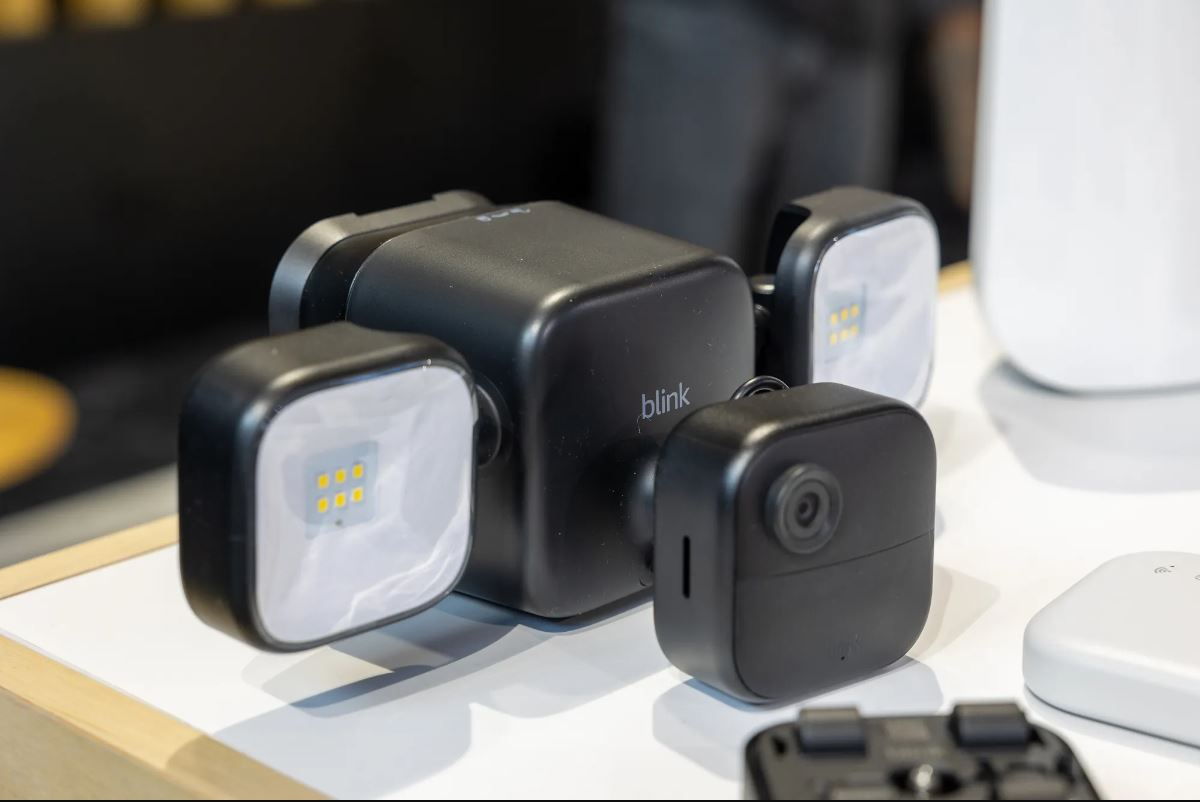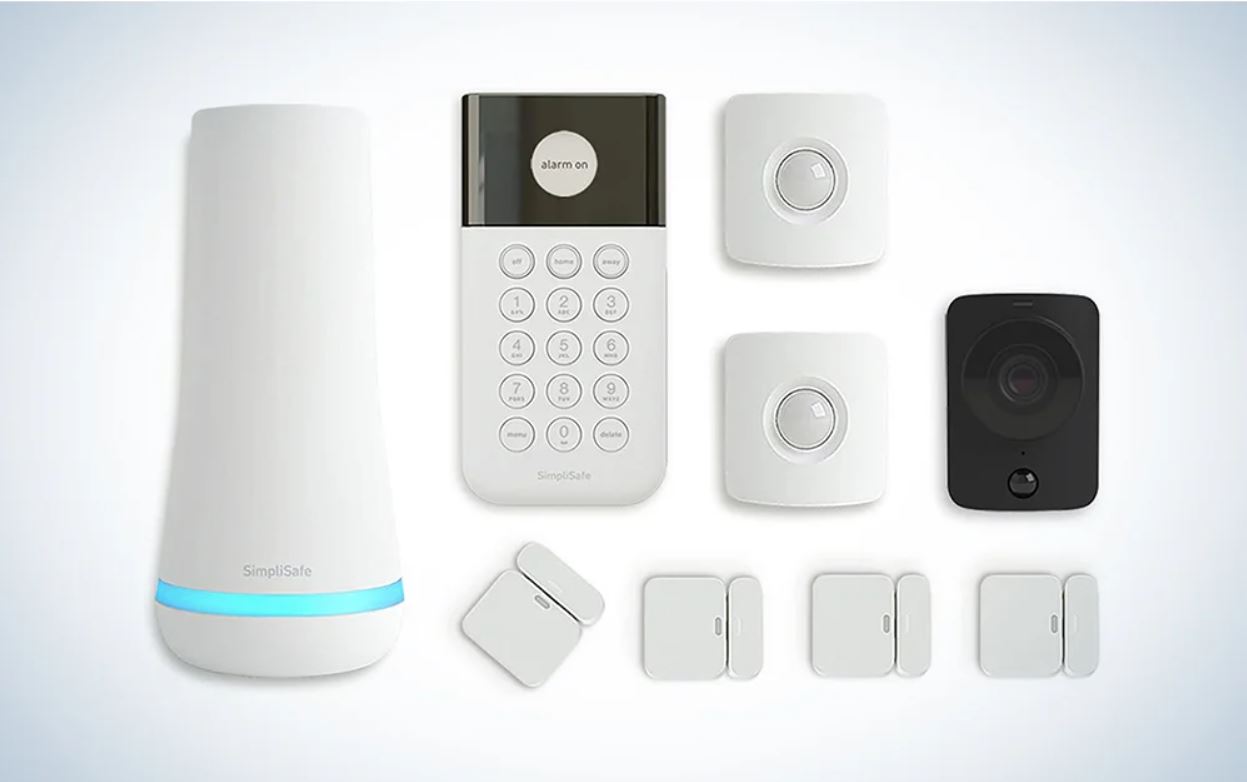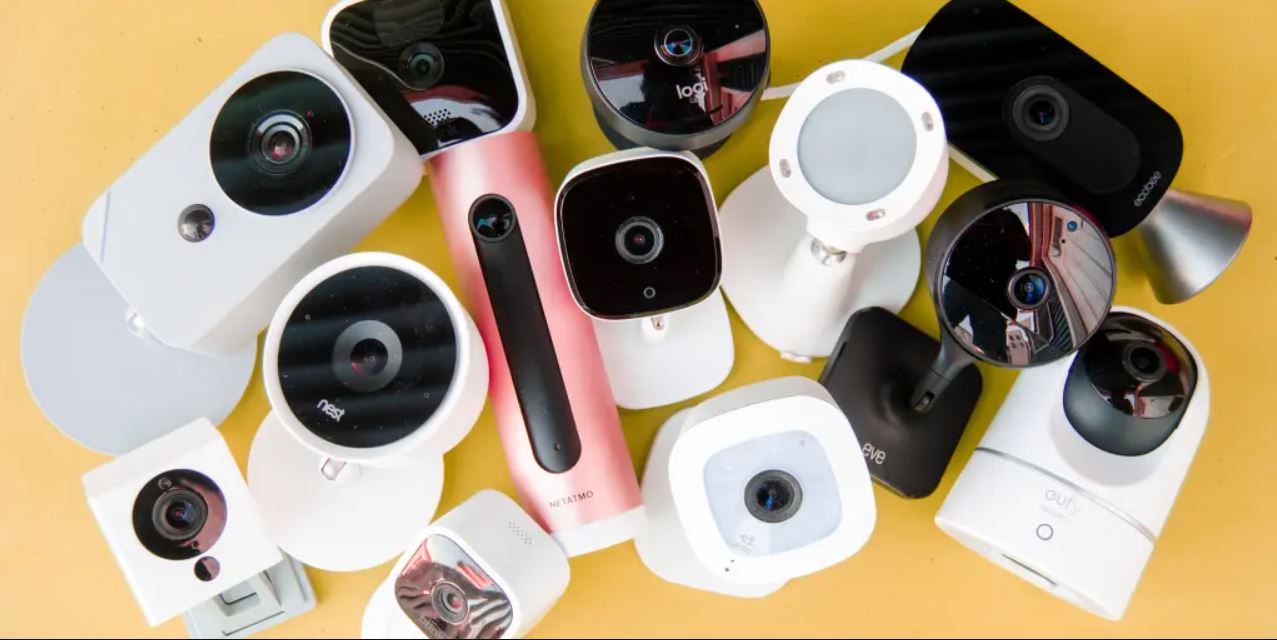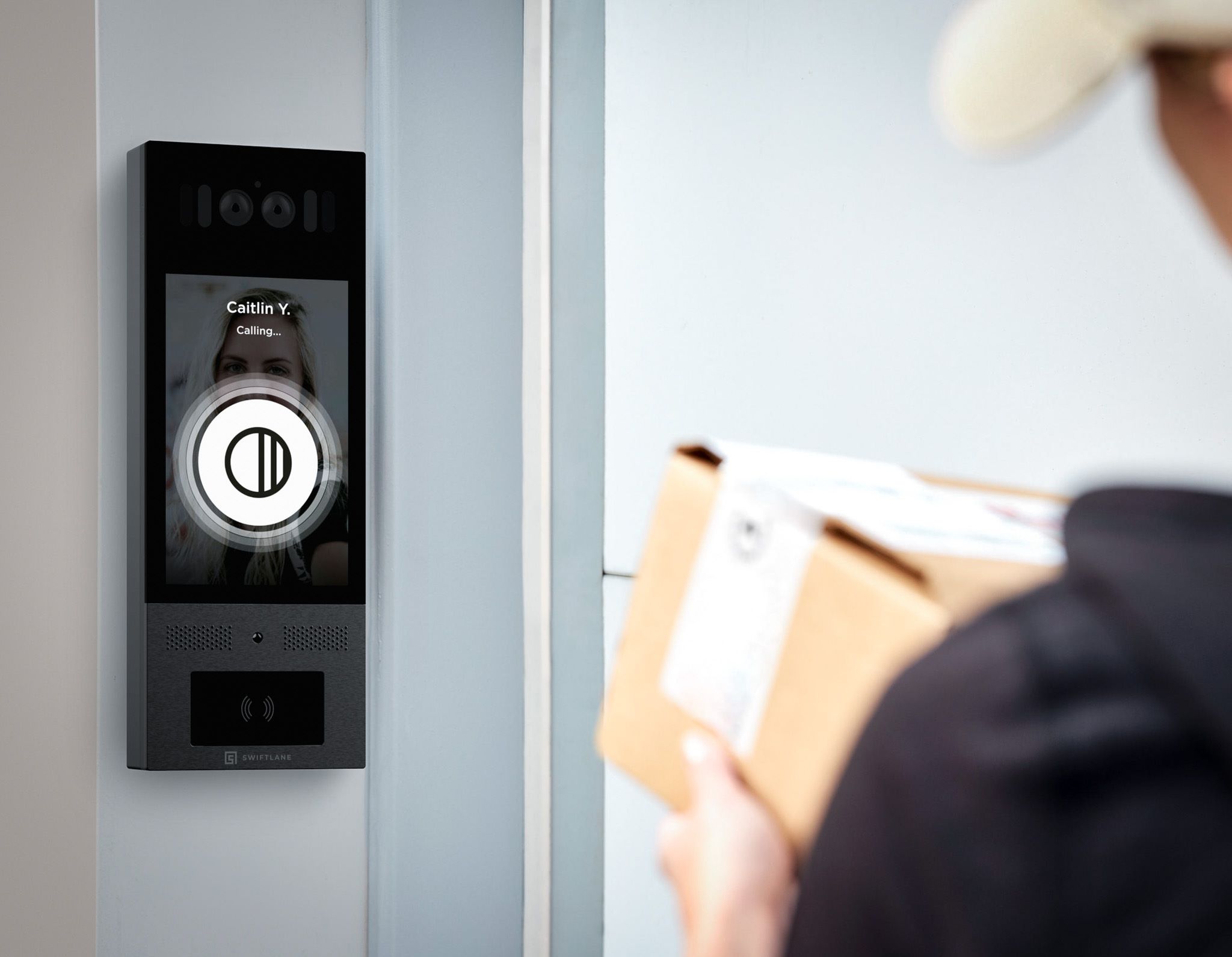Assessing Home Security Needs
When it comes to designing a home security system, the first step is to assess your specific security needs. Every home is unique, and understanding the vulnerabilities of your property will help you determine the most effective security measures to implement. Here are some factors to consider when assessing your home security needs:
- Location: Start by considering your location and the particular security risks associated with it. Are you in a low-crime or high-crime area? Are there any nearby businesses or institutions that may impact the security of your home?
- Property Characteristics: Examine the layout and characteristics of your property. Are there multiple entry points such as doors and windows? Are there any blind spots that could provide hiding spots for potential intruders?
- Lifestyle: Evaluate your daily routine and the presence of valuable possessions in your home. Do you travel frequently or spend long hours away from home? Are there high-value items that need special protection?
- Family Situation: Consider the number of family members and their specific needs. Do you have small children or elderly family members who may require additional safety measures?
- Past Incidents: Reflect on any past security incidents or concerns you may have had. Have you experienced any break-ins or suspicious activities in the neighborhood?
By thoroughly evaluating these factors, you can gain a comprehensive understanding of your home security needs. This assessment will serve as the foundation for designing a customized security system that addresses your specific vulnerabilities and provides peace of mind.
Choosing the Right Security Components
Once you have assessed your home security needs, the next step is to choose the right security components to build a robust and effective system. There are various security devices and technologies available in the market, so it’s essential to select the ones that align with your specific requirements. Here are some key components to consider:
- Security Alarms: A security alarm is a fundamental component in any home security system. Choose an alarm system that is reliable, has a loud alarm sound, and offers features like motion detection and door/window sensors.
- Security Cameras: Security cameras provide a crucial layer of surveillance for your property. Consider the number of cameras you need, their resolution and viewing angles, as well as features like night vision and remote access for monitoring.
- Smart Locks: Smart locks offer convenience and enhanced security for your doors. Look for locks that integrate with your chosen security system and provide advanced features such as keyless entry, remote access, and activity logs.
- Access Control Systems: If you have a larger property or want to restrict access to certain areas, consider implementing an access control system. This can include features like keycards, biometric scanners, or keypad entry systems.
- Surveillance Lighting: Adequate outdoor lighting is important for deterring intruders. Install motion-sensor lights around entry points and vulnerable areas of your property to increase visibility and discourage unauthorized access.
- Monitoring Services: Consider whether you want to opt for professional monitoring services. These services can provide round-the-clock monitoring, immediate response to emergencies, and peace of mind knowing that trained professionals are keeping an eye on your property.
Make sure to research different brands and products, read customer reviews, and consider consulting with a professional security provider to ensure you choose the right components for your specific needs. Remember, the effectiveness of your home security system depends on the quality and compatibility of the chosen components.
Designing a Secure Entryway
The entryway of your home is the first line of defense when it comes to home security. A well-designed and secure entryway can deter potential intruders and provide a sense of safety for you and your family. Here are some key considerations for designing a secure entryway:
- Strong Doors: Start by ensuring you have solid exterior doors made of durable materials such as metal, solid wood, or fiberglass. Reinforce the door frame with strike plates and long screws to make it more resistant to forceful entry.
- Deadbolt Locks: Install deadbolt locks on all entry doors to provide an extra layer of security. Opt for Grade 1 deadbolts, which are the most secure and resistant to tampering.
- Peephole or Doorbell Camera: Enhance your entryway security by installing a peephole or a doorbell camera. This allows you to see who is at your door before opening it, providing an added level of safety.
- Security Screens: Consider installing security screens on your front door and windows. These screens are made of strong mesh or stainless steel, preventing break-ins while still allowing ventilation and natural light.
- Well-Lit Area: Ensure your entryway is well-lit, both during the day and at night. Adequate lighting discourages unwanted activity and makes it easier to identify potential threats.
- Landscape Design: Take your landscaping into account when designing a secure entryway. Trim back any overgrown bushes or trees that could provide cover for intruders, ensuring visibility from the street.
- Security Signage: Display security signs or stickers prominently near your entryway. Even if you don’t have a security system, these can act as a deterrent, making intruders think twice before attempting to break in.
Remember to regularly inspect and maintain your entryway components to ensure they are functioning properly. Additionally, consider consulting with a professional security provider for tailored advice on designing a secure entryway that suits your specific needs.
Securing Doors and Windows
Doors and windows are common points of entry for intruders, so ensuring they are properly secured is crucial for a comprehensive home security system. By taking the necessary precautions, you can significantly reduce the risk of unauthorized access. Here are some effective security measures for securing doors and windows:
- Reinforce Door Frames: Strengthen door frames with metal plates or strike plates. Reinforcing the weak points of the door frame makes it more difficult for intruders to kick in the door.
- Install Door and Window Sensors: Door and window sensors are an essential part of a security system. These sensors will alert you immediately if a door or window is opened, helping to deter intruders and allowing for a quick response.
- Use Security Film: Apply security film to windows to make them more resistant to break-ins. This adhesive film adds an extra layer of protection against forced entry attempts.
- Upgrade Locks: Consider upgrading to high-security locks or smart locks for your doors and windows. These locks offer added features such as keyless entry, remote control, and the ability to monitor and control access from your smartphone.
- Install Window Bars: Window bars provide an effective physical barrier against intruders. They are especially useful for ground-level windows or windows in vulnerable areas of your home.
- Install Window Locks: Ensure that all windows have secure locking mechanisms. Install window locks that allow you to partially open the window for ventilation without compromising security.
- Use Window Coverings: Consider using curtains, blinds, or window films to prevent outsiders from seeing inside your home. This helps protect your privacy and deters potential burglars who might be scoping out your property.
- Implement Glass Break Sensors: Glass break sensors are designed to detect the sound of breaking glass. These sensors can instantly trigger your security system, alerting you to potential break-ins.
Remember to regularly check the condition of your doors and windows, ensuring they are in good working order. Any damaged or deteriorating components should be repaired or replaced promptly. By securing your doors and windows properly, you’ll greatly enhance the overall security of your home.
Implementing an Alarm System
An alarm system is a critical component of any home security strategy. It serves as a deterrent to intruders and provides you with immediate notification in case of a security breach. Implementing an effective alarm system requires careful planning and consideration. Here are some key steps to follow when installing an alarm system:
- Research Alarm System Options: Start by researching different alarm system options available in the market. Consider factors such as the type of alarm (loud siren, silent, or monitored), the level of security it offers, and any additional features like motion sensors or glass break sensors.
- Choose the Right Sensors: Determine the appropriate sensors for your alarm system. Door and window sensors are essential and should be installed on all entry points. You may also consider adding motion sensors that detect movement within specific areas of your home.
- Consider Professional Monitoring: Decide whether you want to opt for professional monitoring services. With professional monitoring, your alarm system is connected to a monitoring center that alerts authorities in case of a triggered alarm, providing an extra layer of protection.
- Install Alarm Control Panel: Choose a central location for your alarm control panel, where it can be easily accessed and operated. This panel serves as the command center for your alarm system, allowing you to arm and disarm the system and monitor its status.
- Test and Maintain Regularly: Regularly test your alarm system to ensure it is functioning correctly. Schedule maintenance checks and inspections to identify any issues and make necessary repairs or upgrades.
- Display Alarm System Signage: Place signs and stickers indicating that your home is protected by an alarm system. Visible signage acts as a deterrent, making potential intruders think twice before attempting a break-in.
- Train Family Members: Educate all family members on how to properly use and operate the alarm system. Ensure everyone knows how to arm and disarm the system, as well as how to respond in case of an alarm activation.
An alarm system is an effective tool for safeguarding your home and providing peace of mind. By implementing an alarm system and following these steps, you can significantly enhance the security of your property.
Setting Up Security Cameras
Security cameras are valuable assets in any home security system, acting as the eyes and ears of your property. They provide visual surveillance and help deter potential intruders. When setting up security cameras, it’s important to strategically place them for optimal coverage. Here are important steps to follow:
- Create a Camera Placement Plan: Survey your property to identify areas that require monitoring. Common areas include entry points, driveways, and backyard entrances. Take note of blind spots and vulnerable areas that may require additional camera coverage.
- Choose the Right Cameras: Select cameras that meet your specific needs. Consider factors such as resolution, field of view, night vision capabilities, and weatherproofing. Determine whether you prefer wired or wireless cameras, depending on your preferences and property layout.
- Position Cameras Strategically: Install cameras at points of vulnerability, ensuring they cover a wide angle of view. Aim cameras towards entryways, high-traffic areas, and valuable possessions.
- Consider Camera Placement Height: Position cameras at a height that is out of reach from potential intruders. This helps prevent tampering and ensures clear visibility without obstructions.
- Use a Combination of Camera Types: Employ a mix of camera types to cover different areas. Use wide-angle cameras for expansive areas and zoom-in cameras for detailed surveillance of specific locations.
- Test Camera Coverage: After installation, test camera coverage to ensure there are no blind spots and that the view is clear. Adjust camera angles and positions as needed to optimize coverage.
- Consider Camera Monitoring Options: Decide how you want to monitor your security cameras. Options include using a dedicated monitoring station, connecting cameras to a network video recorder (NVR), or accessing live footage remotely through a mobile app.
- Protect Camera Wiring: Conceal camera wiring to prevent tampering and damage. Run wires through walls or use protective casing to ensure they are not easily accessible.
- Regularly Maintain Cameras: Perform routine maintenance on your cameras to ensure they are functioning properly. Clean camera lenses, check for any signs of damage or deterioration, and update firmware as needed.
Setting up security cameras can provide peace of mind and enhance the security of your home. By following these steps and adhering to best practices, you can optimize camera coverage and ensure your property is well-protected.
Integrating Smart Home Technology
Integrating smart home technology into your home security system can offer a seamless and convenient way to enhance your overall security measures. Smart home devices can automate various aspects of home security, providing you with greater control and peace of mind. Here are ways to integrate smart home technology into your security system:
- Smart Locks: Install smart door locks that allow you to lock and unlock your doors remotely, provide temporary access codes to visitors, and receive alerts when doors are accessed.
- Smart Security Cameras: Utilize smart security cameras that incorporate features such as motion detection, person detection, and facial recognition. Receive real-time notifications and remote access to live video feeds for monitoring your home’s security.
- Smart Lighting: Use smart lighting systems to automate your indoor and outdoor lights. Schedule lighting to turn on and off at specific times or control them remotely to create the illusion of occupancy when you’re away.
- Smart Sensors: Implement smart sensors for detecting motion, door/window openings, and water leaks. Receive instant notifications on your smartphone if any unusual activity is detected, allowing for prompt action.
- Smart Smoke Alarms/Carbon Monoxide Detectors: Replace traditional smoke alarms and carbon monoxide detectors with smart devices that can send alerts to your phone in case of an emergency.
- Smart Security Systems: Consider installing a comprehensive smart security system that integrates all components and provides centralized control. This allows you to easily manage and monitor your security devices from a single interface.
- Smart Home Security Apps: Download and utilize smart home security apps that enable you to control and monitor your security devices remotely. These apps allow you to receive notifications, view live feeds, and manage settings on the go.
- Virtual Assistants: Integrate virtual assistant devices, such as Amazon Alexa or Google Assistant, to control your home security devices through voice commands. This adds convenience and ease of use to your smart home security system.
- Secure Network and Device Management: Ensure your smart home devices are connected to a secure network and regularly update their firmware. Implement strong passwords and enable two-factor authentication for added protection.
By integrating smart home technology into your security system, you can enjoy the benefits of automation, convenience, and enhanced control over your home’s security. Consider your specific security needs and preferences to select the right smart devices for a seamless integration into your home.
Selecting the Right Security Service Provider
Choosing the right security service provider is crucial for ensuring the effectiveness and reliability of your home security system. With numerous options available, it’s important to thoroughly evaluate providers to find the one that best meets your needs and priorities. Here are key factors to consider when selecting a security service provider:
- Reputation and Experience: Research the reputation and experience of the security service provider. Look for reviews, testimonials, and references to get insights into their track record and customer satisfaction.
- Quality of Equipment: Examine the quality and reliability of the security equipment provided by the service provider. Ensure they offer modern, up-to-date technologies that will effectively safeguard your home.
- Range of Services: Consider the range of services offered by the provider. Do they provide alarm systems, surveillance cameras, monitoring services, and other security solutions? Choose a provider that offers comprehensive options tailored to your specific needs.
- 24/7 Monitoring: Determine if the security service provider offers 24/7 monitoring. Having round-the-clock monitoring provides an added layer of security and ensures immediate response to any security breaches.
- Response Time: Inquire about the average response time of the security service provider in case of an alarm activation. A prompt response is essential for quick intervention and minimizing potential damages.
- Customer Support: Assess the level of customer support provided by the security service provider. Ensure they have a responsive and knowledgeable support team available to assist you with any questions or concerns.
- Contract Terms: Carefully review the contract terms and conditions of the service provider. Look for transparent pricing, flexibility in choosing services, and cancellation policies.
- Certifications and Licenses: Verify if the security service provider holds relevant certifications and licenses. This ensures that they adhere to industry standards and best practices.
- Integration with Other Systems: If you have existing smart home devices or systems, confirm if the security service provider can integrate with them for seamless control and monitoring.
- Customization and Scalability: Consider whether the security service provider offers customization options to tailor the system to your specific requirements. Also, assess if they can accommodate future scalability if your security needs change.
Take the time to research and compare multiple security service providers. Request quotes, conduct interviews, and ask for recommendations from trusted sources. With careful evaluation, you can select a reliable security service provider that will deliver peace of mind and effective protection for your home.
Establishing Emergency Protocols
Having well-defined emergency protocols is essential for ensuring the safety and security of your home and family. These protocols outline the necessary steps to take in various emergency situations and ensure a timely and effective response. Here are key considerations when establishing emergency protocols for your home security:
- Family Emergency Plan: Develop a comprehensive emergency plan that includes all family members. This plan should outline evacuation routes, safe meeting points, and communication methods in case of a security breach or other emergencies.
- Emergency Contacts: Compile a list of emergency contacts, including local law enforcement, fire department, medical services, and your security service provider. Keep this list readily accessible and ensure all family members know how to access it.
- Alarm Activation Procedures: Define the procedures for handling alarm activations. Establish who will be responsible for checking the cause of the alarm, contacting emergency services if necessary, and notifying other family members or neighbors of the situation.
- Safe Room or Shelter Area: Decide on a designated safe room or shelter area in your home. This should be a secured space where family members can seek refuge during emergencies. Ensure this area has communication tools, emergency supplies, and easy accessibility.
- Code Words/Phrases: Establish code words or phrases that can be used among family members to indicate a security threat or danger without alerting potential intruders. This can be useful in situations where immediate communication may not be possible or safe.
- Evacuation Procedures: Develop clear evacuation procedures for different scenarios. Establish primary and secondary evacuation routes and designate meeting places outside of your home where family members can gather in case of an emergency.
- Communication System: Determine a reliable communication system for emergencies, such as a designated family group chat or a phone tree. Ensure that all family members know how to use and access the communication system effectively.
- Practice Drills: Regularly conduct practice drills for various emergency situations, including intrusions, fires, and natural disasters. Practice helps familiarize family members with the emergency protocols and ensures an efficient response in real-life situations.
- Education and Training: Provide family members with basic knowledge of first aid, self-defense, and emergency response techniques. Consider enrolling in relevant training programs or workshops to enhance their preparedness.
- Regular Review and Updates: Periodically review and update your emergency protocols as needed. As your family dynamics and home security system change, ensure that your emergency protocols reflect the current situation.
Having well-established emergency protocols is essential for maintaining the safety and security of your home. Regularly review and rehearse these protocols with your family to ensure everyone is prepared to respond effectively in case of an emergency.
Regular Maintenance and Upgrades
Regular maintenance and upgrades are vital to keeping your home security system in optimal condition and ensuring its effectiveness over time. By staying proactive in maintaining and upgrading your security components, you can maximize the protection of your home. Here are key factors to consider:
- Inspect and Test: Regularly inspect all security devices, including alarms, cameras, sensors, and locks. Check for any signs of damage, wear and tear, or malfunction. Test the system periodically to ensure proper functionality.
- Replace Batteries: Replace batteries in your security devices as needed, such as those in sensors, cameras, and control panels. Outdated or weak batteries can compromise the performance of your security system.
- Update Firmware: Keep your security devices up to date by updating their firmware. Manufacturers regularly release updates that address security vulnerabilities and improve performance. Check for firmware updates and apply them as recommended by the manufacturer.
- Upgrade Hardware: Consider upgrading outdated or older hardware components of your security system. Newer technologies often come with enhanced features, improved functionality, and better resistance to tampering.
- Monitor Connectivity: Regularly check the connectivity and communication of your security devices. Ensure they are properly connected to the network, and that remote access is functioning as intended.
- Review Recording Storage: If you have security cameras with recording capabilities, review the storage capacity and retention settings. Make necessary adjustments to ensure an adequate amount of storage space for capturing and storing footage.
- Adjust Camera Angles: Periodically evaluate the camera angles and positions to ensure optimal coverage. Over time, changes in landscaping or new structures might obstruct the view of your cameras. Readjust the angles as needed to maintain clear visibility.
- Update User Access: If there are changes in family members, guests, or personnel who have access to your security system, make sure to update user access accordingly. Remove or update access codes, key cards, or permissions as required.
- Review Security Protocols: Regularly review and update your security protocols, emergency procedures, and contact lists. Ensure all family members are familiar with the protocols and are aware of any changes.
- Consider Professional Inspection: Hire a professional security service provider to conduct periodic inspections of your home security system. They can identify potential vulnerabilities, recommend necessary upgrades, and perform routine maintenance to keep the system in top condition.
Maintaining and upgrading your home security system should be an ongoing priority. By staying vigilant and proactive in addressing maintenance needs and making necessary upgrades, you can ensure that your security system functions optimally to protect your home and loved ones.







